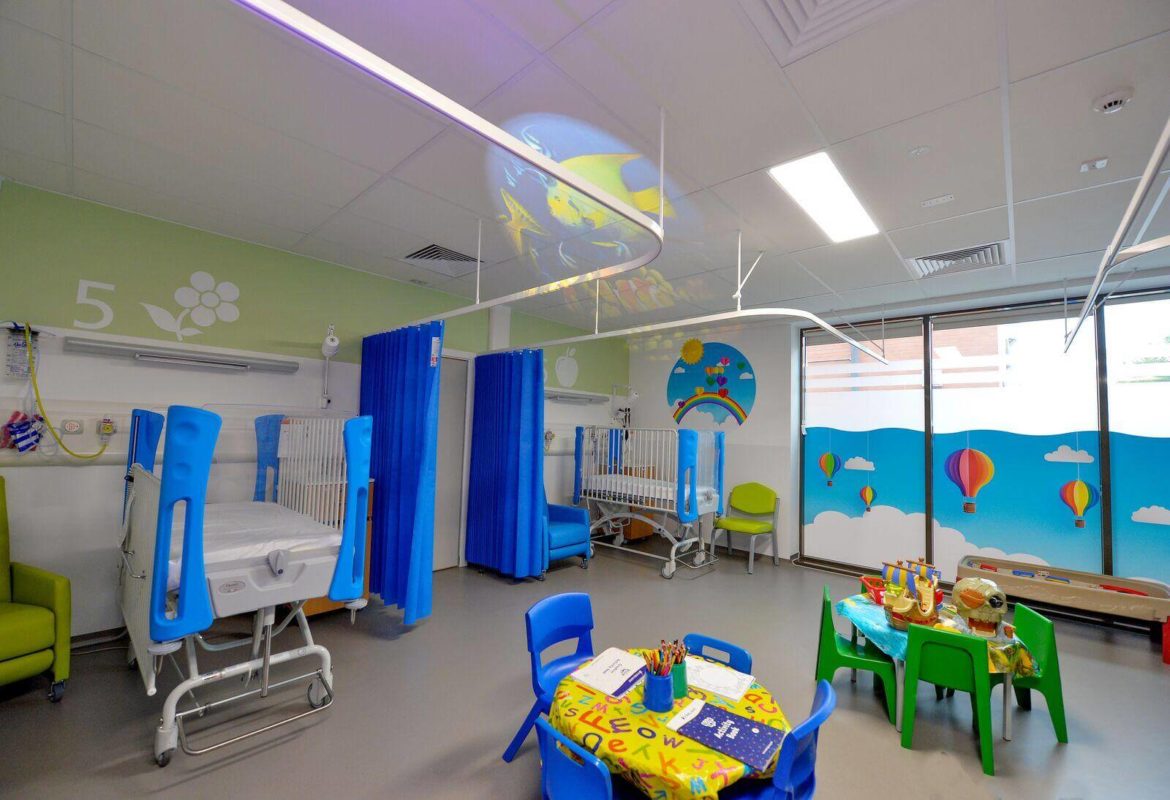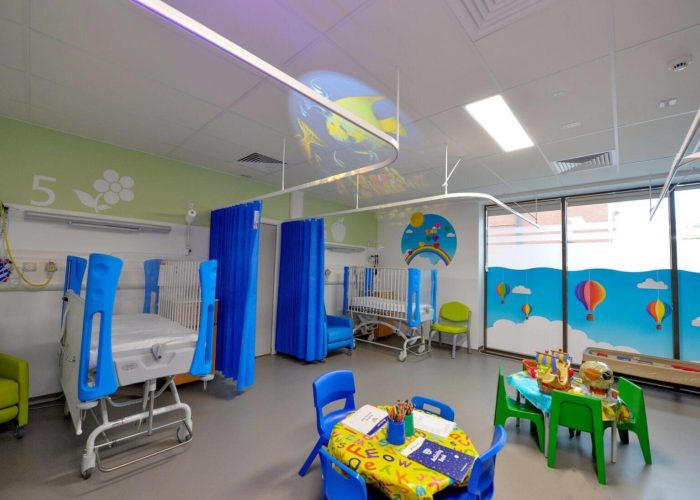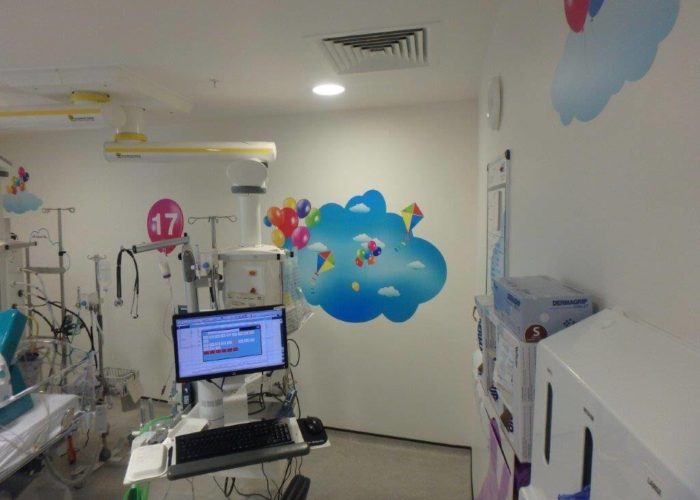
Working with a hospital to redesign wards for young patients brings its own unique set of challenges. Firstly, the needs of these patients are often vastly different to those of adults who are receiving hospital treatment and secondly, the wards need to accommodate not only the patients themselves, but also their parents and other family members.
We’ve worked alongside numerous hospitals and charities over the years to create children’s wards that are purposely built to suit the needs of young patients while also considering the needs of their families, medical teams and other ward users.
So, what details go into our designs to ensure we are creating the best possible place for young patients to get better, and for families to support them while feeling supported themselves?
One of the most important things that we have to take into consideration when we’re designing an environment for young patients is the way in which they will interact with their surroundings. Children are naturally more inquisitive than adults and lack the perception of danger that develops with age. You probably worried less about falling off your bike and grazing your knee as a child than you would now, for example. These two things combined can make the risk of injury greater, especially when they’re coupled with the stress of being in an unfamiliar environment, something which often gets projected as overexcitement and boisterousness.
The furniture we create to become part of a newly refurbished children’s ward is designed to help keep them safe. Smooth edges and round corners help to prevent injuries that are commonly caused by accidental knocks and scrapes, keeping them safe and allowing them to engage in play when they’re feeling well enough.

Something else that we give a lot of thought to when we’re designing rooms and wards for young children is colour. When we first visit wards that we’ll be working to refurbish, we’re often greeted by bright primary colours, much like you would be in a crèche or a nursery. Although the people using the space are the same age, being in hospital is a very different experience to being in nursery and while bright colours are often relied upon to create a welcoming environment for young patients, they often have the opposite effect and can overstimulate those walking into the ward, leaving both patients and parents feeling even more stressed while already dealing with an inevitably stressful situation.
Before we even think about picking up a paintbrush, we always think about the effect that different colours will have on both young patients and their parents. Colour schemes are carefully and deliberately designed to calm and reassure both patients and the adults accompanying them and each element of our design, from the walls to wardrobes to blinds on the windows is chosen to complement the rest. This helps to make a space feel more ‘put together’ and purposely built, something that is much more reassuring than the bright reds and oranges that subconsciously signal danger and trigger a stress reaction for those who are surrounded by them.
As well as using a colour scheme, we often design rooms, and sometimes whole wards, around one central theme with the help of Wall Art. Whether it’s a treatment area, consultation room or bed bay, having images placed on different walls within a space can help to reduce younger children’s focus on a stressful situation. In consultation rooms particularly, providing young patients with something to focus their attention on also makes it easier for parents to engage in important conversations with their children’s doctors while the children themselves are occupied by the various visual elements within the room.
The easily recognised 1001 Things to Spot images, which we reproduce at large scale under a special licence from Usborne Publishing, are one of the ways we create themes within paediatric spaces that help to distract and occupy young patients. The main image provides the focal point of the room and smaller Wall Art installations are placed around the rest of the room, on other walls, windows and even the ceiling, for children to spot.

Giving children multiple points of focus within one space allows them to engage with the main image and the supporting images, feeding their curiosity for longer and making them less likely to bring the focus of their attention back to the stress of the situation.
After we’ve considered the colour scheme and the theme of the imagery that we are going to use, we also have to consider what the space needs to contain. Like all wards it will need to function clinically but, as we know, the needs of these patients are much different to the needs of others. Young children often want to have their parents close by and separation, especially when they’re ill, can heighten their stress, worry and make them less likely to cooperate with the medical staff who are treating them. Simply put, they need the reassurance of having Mum or Dad around.
We always consider what we can add to the environment which will make it easier for a hospital to accommodate family members on a ward without it affecting how the ward itself runs on a day-to-day basis. Of course, without the constraints of space, we’d be the first to suggest installing beds for family members to stay. When space is limited, as it so often is, our fold down beds address the needs of young patients as well as the needs of the ward and the staff.
Having a fold down bed also helps to keep the floor areas within a room as clear as possible.
Not only does this help staff by creating a less stressful environment to work in, it also creates a safer environment for patients and helps to prevent accidents caused by the inevitable childlike curiosity that occurs on a paediatric ward! The safer the environment the better, as it means children who are well enough don’t need to be confined to their beds and can be given the opportunity to play and simply be children again, not just patients.
When we’re designing a children’s ward, we know that it’s not just the young patients who are receiving treatment that the environment needs to support. While they are the people who are at the forefront of our designs, we understand how important it is for the parents and families to feel supported too. By including thoughtful details and innovative design, we are able to create a place that supports everyone who is involved in the journey back to health.
To find out more about how we can help you create a better place for young patients to get better, make sure you get in touch with the team today.

